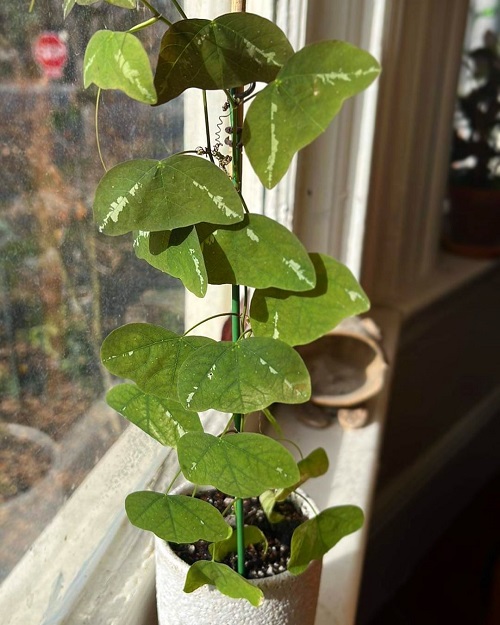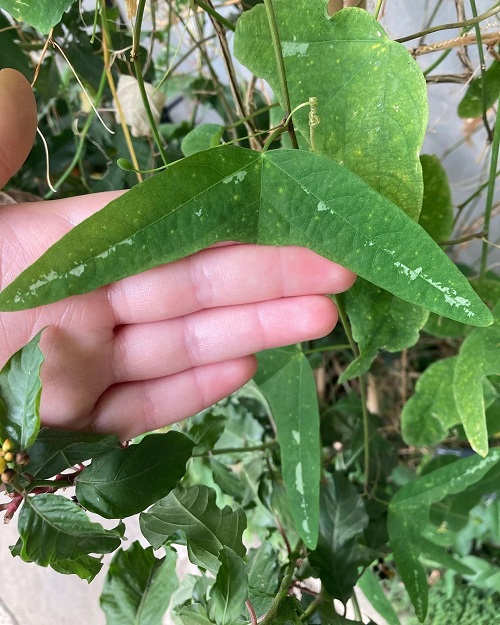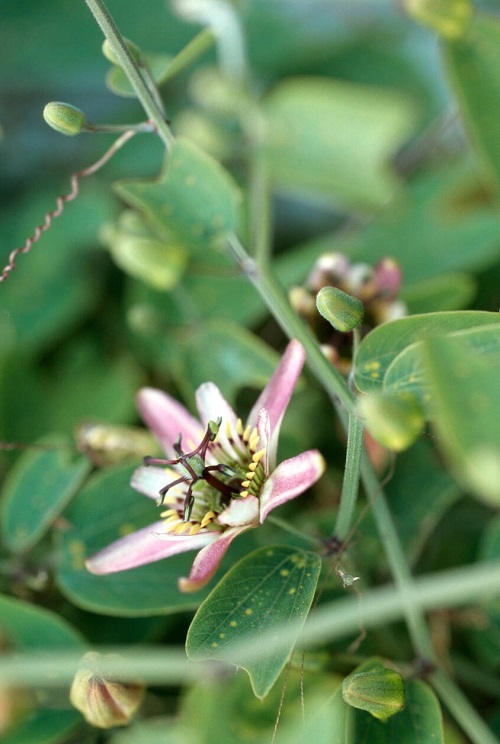Passiflora Colinvauxii stands out with its amazing bat-like leaves. Here’s all you need to know about growing Colinvaux’s Passion Flower.
Passiflora Colinvauxii brings a touch of nature to any area with ease. Its ability to vine on lightweight trellises, strings, or any other vertical structure makes it a versatile and attractive addition to any space.
Check out the best Types of Passionflower Vines
Passiflora Colinvauxii Plant Information

The plant Passiflora colinvauxii, pronounced “colinvo-e-e,” is named after the renowned ecologist and author Dr. Paul Colinvaux of the Marine Biological Laboratory. He discovered it while it was in bloom in the Galapagos Islands in 1966. Unfortunately, Passiflora colinvauxii is facing threats in its natural habitat and is considered rare, listed as one of 45 Passiflora species on the 1997 IUCN Red List of Threatened Plants.
P. colinvauxii can be found in the Scalesia Zone of Santa Cruz, located in the Galapagos Islands near the Equator. This area is situated at an elevation between 200 and 400 meters (660-1311 feet) and boasts the richest soil of any zone on the island, making it a prime location for agriculture.
This rapidly growing vine boasts leaves shaped like bats and marked with silver-gray patterns, which serve as a deterrent to butterfly larvae from feasting on them. This vine is incredibly abundant in its blooming capabilities.
It is unclear why it flowers during certain times, but it is thought that varying light levels or other variables may play a role despite the constant day length in the region. The plant attracts bees in the UK and is pollinated by Xylocopa darwini Cockerell in the Galapagos.
USDA Zones: 9-12
Propagating Passiflora Colinvauxii

Propagating Passiflora Colinvauxii by Cuttings
Take stem cuttings in the spring or early summer and plant them in well-draining soil or a mixture of soil and perlite. You can dip the cuttings in rooting hormone to increase the chances of success. Keep the soil moist and place the cuttings in bright, indirect light.
Propagating Passiflora Colinvauxii by Seeds
Purchase the seeds online or from a nursery and sprinkle them on the surface of a damp potting mix. Do not cover the seeds, as they require light to germinate. Put the pot in a sealed plastic bag and keep it in a bright spot.
Within the next 10 to 20 days, you can expect the seeds to begin sprouting and growing. Once they have germinated, remove the plastic covering and place the pot in a location that is not directly exposed to sunlight.
For optimal growth, it’s recommended to use a grow light to provide the seedlings with the necessary light they need to grow. Once they have grown to several inches tall with multiple sets of leaves, they can be moved to larger pots.
Requirements for Growing Passiflora Colinvauxii

Light
Passiflora Colinvauxii is a highly adaptable plant that can tolerate different light levels. It can grow in conditions ranging from low light to direct sunlight.
When exposed to bright light, the plant will produce new leaves with a purple hue that will gradually fade to dark green, creating a gradient appearance. In low light, the leaves will remain a lighter green.
Soil
The best soil for growing Passiflora Colinvauxii is a well-draining, loamy soil with a pH of 6.0-7.0. The soil should be enriched with plenty of organic matter, such as compost or aged manure.
A thorough soil preparation, incorporating organic matter, will ensure the best results.
Water
It requires consistent moisture to thrive, but it is important to avoid overwatering and letting the soil become waterlogged. On the other hand, the soil should also not be allowed to dry out completely.
If the soil remains dry for an extended period, the lower leaves may turn yellow and eventually die. Despite this setback, the plant is resilient and can recover quickly with proper watering.
Humidity
Passiflora Colinvauxii can grow successfully in normal room humidity, as well as outdoor conditions in California, and does not necessarily require high humidity. However, it can also thrive in greenhouse environments, where higher humidity levels can benefit the plant.
Check out the best Types of Coneflower Varieties
Passiflora Colinvauxii Plant Care

Fertilizer
Feed Passiflora Colinvauxii plant during the growing season, which is typically about once a month. A balanced, controlled-release fertilizer is advised.
If you are watering outdoor potted plants heavily during the summer, they may need to be fertilized more frequently. During the winter, it is appropriate to reduce or stop fertilizing altogether.
Pruning
Passiflora Colinvauxii may require pruning if it starts to outgrow its wire support. The best time for this trimming is during late winter or early spring when the plant is dormant.
Common Pests and Diseases
Like many other houseplants, Passiflora Colinvauxii can be susceptible to pests such as scale, spider mites, and whiteflies. To control these pests, it is best to use horticultural oil or soap, such as Neem oil.
Additionally, if the plant is kept too wet, it may develop a leaf spot, a fungal disease. To address this issue, it is important to remove any affected leaves and treat the plant with a fungicide.



